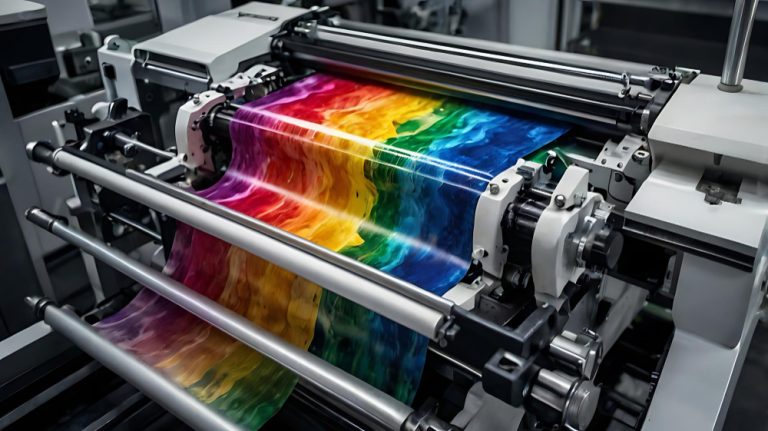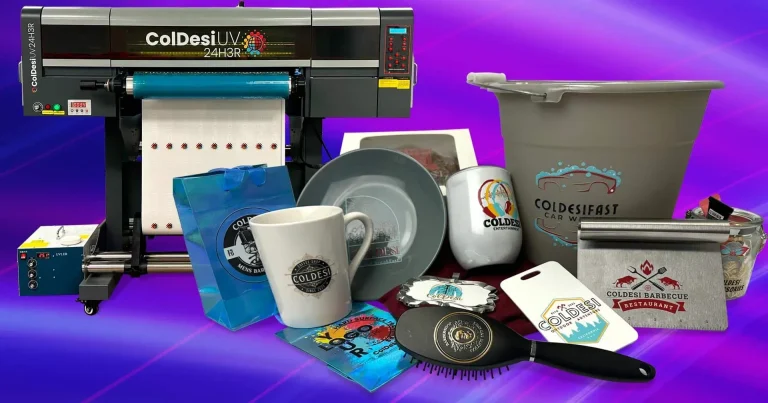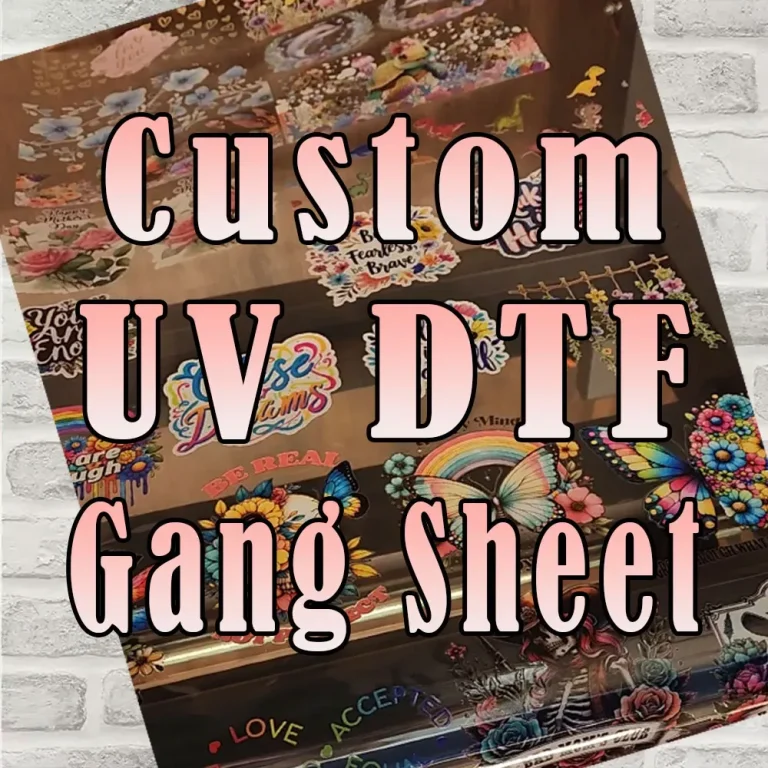UV DTF Gangheet: Top Tips to Master Your Printing Projects
Mastering UV DTF Gangheet is essential for anyone looking to make a mark in the world of printing. This innovative technique blends the strengths of direct-to-film printing with the rapid curing abilities of UV light, resulting in stunning results on various materials, from textiles to hard surfaces. Whether you are a seasoned printer or a newcomer, understanding and applying the top UV DTF printing tips can drastically improve the efficacy of your projects. By perfecting the methods surrounding UV printing techniques, you’re not just producing prints—you’re creating works of art that captivate viewers. Join us as we delve into the intricacies of mastering UV DTF, revealing insights that will elevate your printing endeavors to professional standards.
The realm of UV DTF printing encompasses a fascinating blend of advanced technologies aimed at revolutionizing printing practices. This approach, often referred to as direct film printing, combines the precision of ultraviolet light curing with the versatility of transferable films, allowing for vibrant, high-quality prints on a myriad of surfaces. As the demand for robust and visually appealing printing solutions grows, understanding the nuances of UV printing techniques becomes paramount. Whether you’re working on crafting intricate textiles or durable graphics, this guide is structured to equip you with essential knowledge and effective strategies. Discover how to enhance your artistic output through refined practices that can set your projects apart in an increasingly competitive landscape.
Understanding the Basics of UV DTF Printing
When diving into the world of UV DTF printing, it’s important to first grasp the technology’s fundamentals. UV DTF, or Direct to Film printing, utilizes specialized films on which designs are printed with UV inks. These inks are cured instantly by ultraviolet light, creating a durable bond with a variety of substrates. This process allows for vibrant color reproduction and impeccable detail, making it essential for anyone looking to improve their printing projects.
Understanding how UV DTF works can empower you in your printing endeavors. The interaction between UV light and ink is pivotal; it determines not just the adherence of the ink to the film but also its performance on the final substrate. By familiarizing yourself with the steps involved in UV DTF printing, you’ll be better prepared to troubleshoot potential issues, ensuring a smoother workflow and better print quality.
Choosing the Right Inks for Optimal Results
Selecting the right inks is crucial for successful UV DTF printing. High-quality UV inks are specifically formulated to adhere to the types of substrates you are working with, whether they are textiles, metal, or glass. Not only do these inks offer vibrant colors, but they also provide enhanced durability when cured properly. Choosing inks that are compatible with your printing setup is a key step in mastering UV DTF gangheet.
Moreover, the performance characteristics of UV inks can greatly affect your end results. Quality inks lead to superior adhesion and minimize issues like fading or smudging. Investing in high-grade UV inks can elevate the final product’s look and longevity, thus ensuring that your printing projects stand out in a competitive market.
Preparing Surfaces for UV DTF Application
Surface preparation plays a vital role in the success of UV DTF printing. It’s not sufficient just to apply ink; the substrate must be pristine, free from dust, oils, or any contaminants that might affect adhesion. For certain materials, applying a primer or a special coating can significantly improve the bonding of the UV inks. This is particularly important when working with glossy or non-porous surfaces.
By ensuring that substrates are thoroughly cleaned and properly prepped, the risk of ink adhesion problems decreases dramatically. Taking the time to prepare surfaces correctly sets the foundation for achieving flawless prints, ultimately enhancing the overall quality of your printing projects. Remember, a clean environment leads to clean prints.
Fine-Tuning Printer Settings for Enhanced Outcomes
Every UV DTF printer comes with its specifications and varying capabilities. Fine-tuning the printer settings, such as resolution, speed, and curing intensity, is essential for optimizing results. Adjustments can lead to enhanced detail in intricate designs while ensuring that colors remain vibrant. A careful balancing act of these settings can dramatically affect the final output quality.
Additionally, experimenting with these parameters can help you uncover the sweet spot that works best for your specific projects. Monitoring how adjustments impact adhesion and color depth allows you to refine your skills in mastering UV DTF printing. This practice not only improves efficiency but also enhances your creative possibilities.
Selecting the Perfect Film for Your Printing Needs
Film selection is a critical component of UV DTF printing, as different films are designed for various applications. Factors such as material type and intended use must be considered while choosing the film. For example, if you’re printing on textiles, a flexible film is essential for accommodating the fabric’s movement, while rigid materials may require different attributes for successful transfer.
Understanding the composition and properties of available films allows you to pick the right one that complements your project requirements. This not only impacts the quality and longevity of the prints but also influences the overall ease of the printing process. By making informed decisions about film selection, you can improve the results of your UV DTF gangheet applications.
Perfecting the Curing Process in UV DTF Projects
The curing process in UV DTF printing is pivotal for achieving high-quality prints. Proper curing ensures that the inks bond adequately to the substrate, preventing issues like smudging and peeling post-application. Calibration of UV lights is crucial; it ensures that enough intensity is applied for full curing without causing damage to the material being printed on.
Implementing regular checks and making adjustments according to environmental conditions can significantly enhance the overall curing results. By perfecting this process, you’ll be able to produce prints that not only look exceptional but also stand the test of time, thus further mastering the art of UV DTF gangheet.
Frequently Asked Questions
What are the best UV DTF printing tips for beginners?
For beginners mastering UV DTF gangheet, focus on understanding the technology behind UV DTF printing, choosing high-quality inks, and preparing your substrates thoroughly. Experiment with printer settings to find the ideal resolution and speed for your projects.
How can I improve my UV DTF printing projects?
To enhance your UV DTF printing projects, ensure the substrate surface is clean and prepare it properly. Fine-tuning the curing process and selecting the right film for your specific application are also key to achieving vibrant results.
What role does curing play in UV DTF printing techniques?
Curing is crucial in UV DTF printing techniques; it ensures that the ink adheres firmly to the substrate. Proper calibration of UV lights and monitoring curing intensity are essential to prevent issues like smudging or fading.
What should I consider when selecting inks for UV DTF gangheet?
When selecting inks for UV DTF gangheet, choose high-quality UV inks that are compatible with your printer and substrates. These inks provide better adhesion, vibrant colors, and improved durability for your printing projects.
How can I ensure consistent results in my UV DTF printing projects?
To achieve consistent results in UV DTF printing, regularly perform test prints to calibrate your settings based on environmental factors and substrate variations. Maintaining your equipment and staying updated on printing techniques can also enhance reliability.
What are effective post-processing techniques for UV DTF prints?
Effective post-processing techniques for UV DTF prints include applying protective coatings or laminating your designs to enhance durability and color vibrancy. These methods not only protect against damage but also improve the overall quality of your projects.
| Key Point | Description |
|---|---|
| Understanding UV DTF Printing | Learn the fundamentals of UV DTF printing, which uses specialized film and UV light for vibrant designs. |
| Choose the Right Inks | Select high-quality UV inks for better adhesion, colors, and overall finish. |
| Surface Preparation | Ensure substrates are clean and potentially use a primer for better ink adhesion. |
| Fine-Tune Printer Settings | Adjust settings like resolution, speed, and curing intensity for optimal results. |
| Film Selection | Choose the right type of film according to the project’s application and material. |
| Perfecting the Curing Process | Calibrate UV lights for effective curing without damaging the substrate. |
| Testing and Calibration | Conduct frequent test prints to adjust calibration based on conditions. |
| Explore Post-Processing Techniques | Implement coatings or lamination for enhanced durability and vibrancy. |
| Regular Maintenance and Cleaning | Maintain your equipment to ensure consistent printing quality and longevity. |
Summary
UV DTF Gangheet is a transformative technique that enhances printing across various surfaces. By mastering this process, you can create visually striking prints that are both durable and high-quality. Understanding the unique aspects of UV DTF printing, such as choosing the right inks and preparing your surfaces, will set you on the path to successful applications. Incorporate regular testing and maintenance to refine your skills and adapt to evolving needs. As you invest time and effort into mastering UV DTF gangheet, expect to see standout results that elevate your projects and satisfy clients. Embrace this innovative printing technology and watch your ideas come to life!







